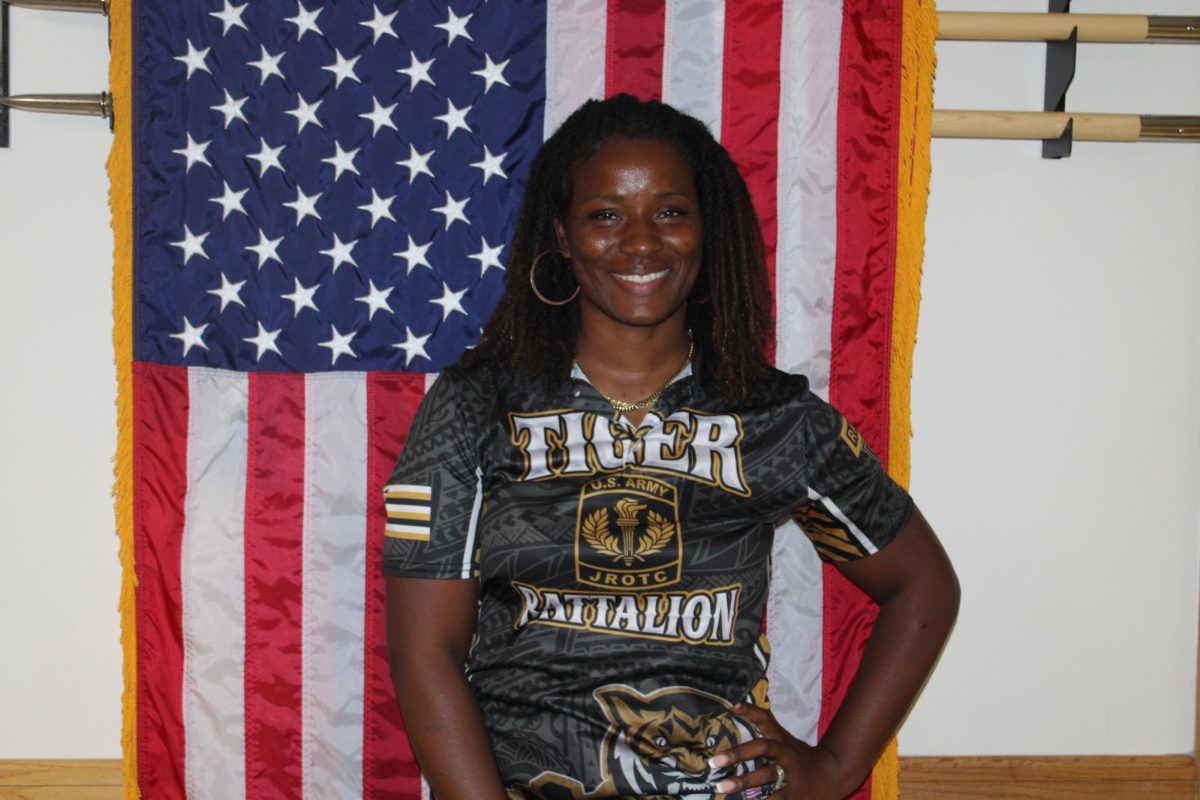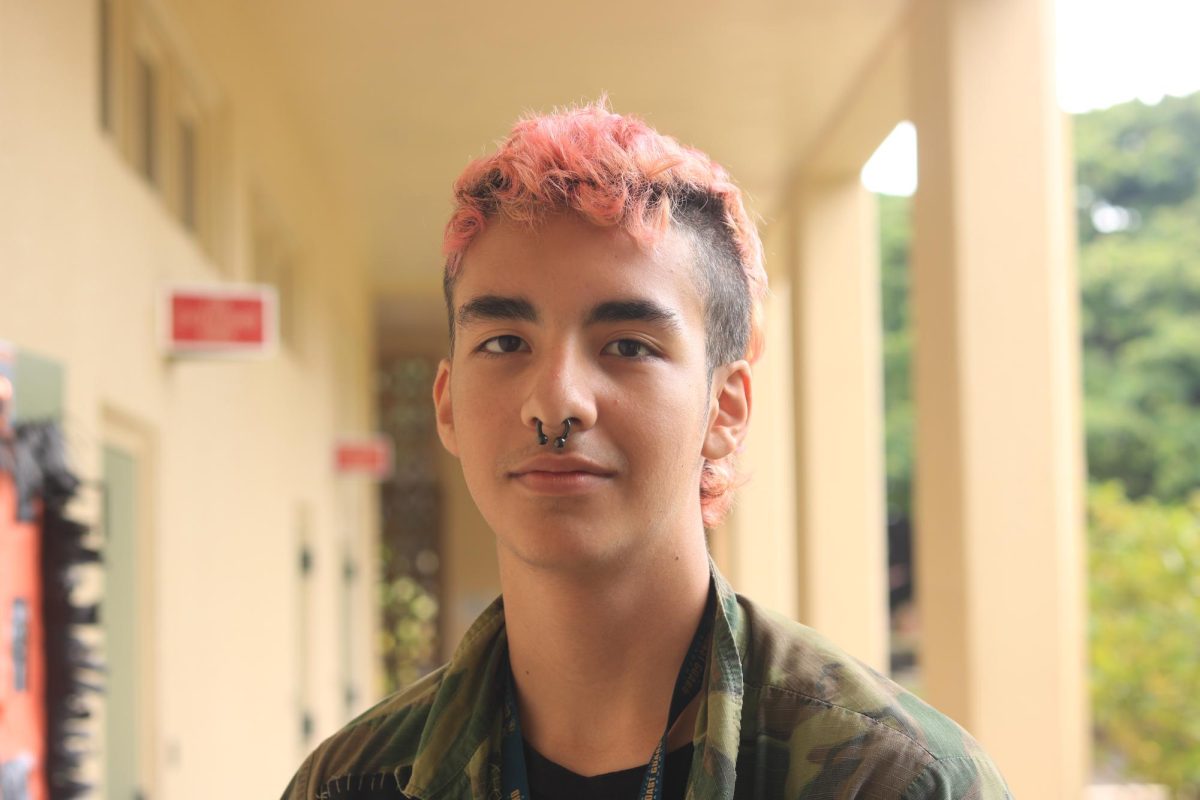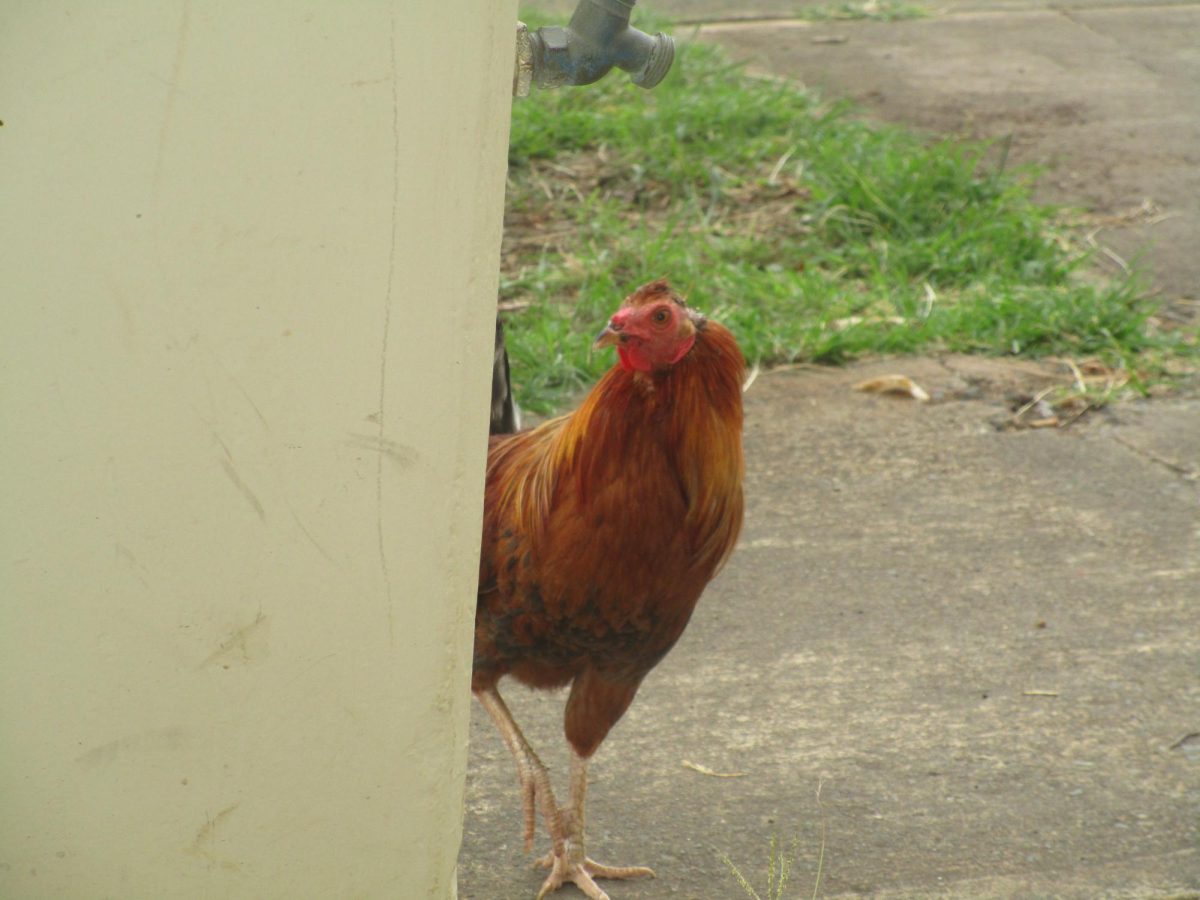Throughout the weekends in late October, the McKinley High School Theater Group performed their fall show, “Beauty and the Beast.” Besides the acting, singing, and overall musical performance, being behind the curtains is a show in itself.
Bringing The Show to Life
This year’s production was chosen by the creative team, which included Natasha Taketa and Anson Bernal, who worked on stage design; Scott Takata, who worked on vocals; Dwayne Sakaguchi, who worked on choreography.
“It is mostly determined by how many students we have available and their talents to determine which type of musical we can do,” Taketa said.
This year, Beauty and The Beast was chosen, which is considered a much bigger production in comparison to the previous years, especially in terms of costumes.
In previous years, Taketa has done what many local theaters do and made their own costumes. This is convenient as the show takes place during Halloween time.
“But with Disney, you can’t do that,” Taketa said.
Ron Okamura, McKinley’s principal, was able to support and fund the theater groups to be able to get proper costumes.
“We needed to go ahead and reach out to a company that does these kinds of things for theaters,” Taketa said. “We were able to rent costumes from Disguises, which is located in Colorado.”
Stage design is another important part of bringing the show to life. This is run by Taketa and Bernal, and each year they build the design on different stage concepts.
Last year for Jekyll and Hyde, the stage had three levels of platforms. They were able to utilize those levels again this year. “With the [previous] level, we were able to build upon that so we could make a castle for this year,” Taketa said.
There were also set designs created this year to roll onto the stage, which were used to change scenes. This piece was created by Bernal.
“He did a wonderful job in designing something for us to be able to utilize on stage,” Taketa said.
Along with the teachers’ involvement, students play a huge role as they are the only ones backstage. The theater craft class helps in painting and designing what they want to put on the stage.
“I will help with the construction part with Mr. Bernal, but it’s up to [the students] what color scheme they want to do, and that’s still all from the students,” Taketa said.
Hell Week
The week prior to the performance is dubbed “Hell Week,” due to the chaos the group undergoes.
Taketa said that this week is extremely challenging as all different components work to piece the production together.
“We try to make sure that everyone has everything that they need done before we get to Hell Week,” Taketa said. This is so that technical parts, like the stage crew, are able to practice the movement of props, lights, sound, etc.
During this time, every group of the production works in components. For example, the pit orchestra works separately, and joins the theater later on in the day.
“Everything really gets put together when the band comes in,” Liam Choy (c/o 2026) said.
The group uses rehearsal tracks before the band joins them in rehearsal.
“Rehearsal tracks aren’t always as reliable as having live instruments,” Choy said.
The rehearsals during hell week are from nine o’clock in the morning until four o’clock in the afternoon. Around noon, lunch breaks are provided. This year, the group was able to get support from Chick Fil A to fund the lunch breaks.
“Chick Fil A was nice enough. They gave us some chicken and biscuits for two days,” Taketa said.
Before shows, the group congregates and motivates each other in a big circle. They motivate each other by talking about how far they have come in the period of time preparing for the performance.
“It was a wild ride because in hell week, it was all over the place,” Thalia Tatingal (c/o 2025) said.
Managing The Stage
Tatingal is part of managing the stage props and hands and has been involved since her sophomore year.
“They make sure that everything is in order. From each scene, the props have to be directly where they should be,” Tatingal said. “Stage hands are the ones behind the scenes that move stuff and background items.”
However, working for stage crew involves instances of technical difficulties behind the scenes. Tatingal said that the limited amount of headphones contributes to this.
“Sometimes there’s technical difficulties and the headset is not connected. So, we don’t know what cue is going on,” Tatingal said.
On opening night, the lights failed to turn on for the opening scene. Despite the technical difficulties, the cast members continued to sing.
“One of the headsets was broken, so we had to work around that and I had to give my headset to someone else,” Tatingal said.
Although Tatingal was not involved in working with the lights for the show, she was able to help the rest of the backstage crew by giving her equipment. This resulted in the lights turning on for the first act to finish smoothly.
Tatingal said that actors have to pay attention to their cues, or they will miss them. “It would not bring professionalism into the theater.”
To prevent confusion within the audience and cast members, Tatingal said that despite the stressful situations happening backstage, the crew tries their best to keep the stress on a low.
“Even though it’s very stressful and all over the place, you learn to have fun,” Tatingal said.
Choy is one of the stage managers for MTG. He has been involved in the theater group for three years, since the beginning of the group’s revival after COVID.
“It’s really hard to calculate what being a stage manager is. It’s basically just making sure that actors and crew members stay on cue and make sure they know what they’re doing,” Choy said.
Along with managing the cast, Choy is responsible for creating and giving the stage cues. These stage cues indicate when a prop or actor goes on stage.
“Usually the director helps us with it, but most of the time she wants it to be student run,” Choy said.
The creation of these cues involves collaborating with the stage crew and cast members. This collaboration also involves training from experienced people in the program. Choy was trained by senior Arianne Fiesta during his sophomore year.
Being backstage during the production involves adaptability from the stage crew. Choy said that the headsets are used by the crew for communicating changes that happen.
“If Ms. Taketa tells me, oh, ‘I want this to come out instead or I want these lights instead’ she will make that change quickly during the show and then we have to adjust as well,” Choy said.
This adaptability is difficult with a small number of people. Choy said that in the previous year, they had more cast members compared to crew members.
“I think off the top of my head, I can count on my hand how many crew members there were compared to the cast, under ten,” Choy said.
After his experience as stage manager, Choy said that he has learned valuable lessons in theater regarding managing other people and working with those with differing opinions.
“Stage crew is the frame and the cast is the picture. You can’t have one without the other,” Choy said.











